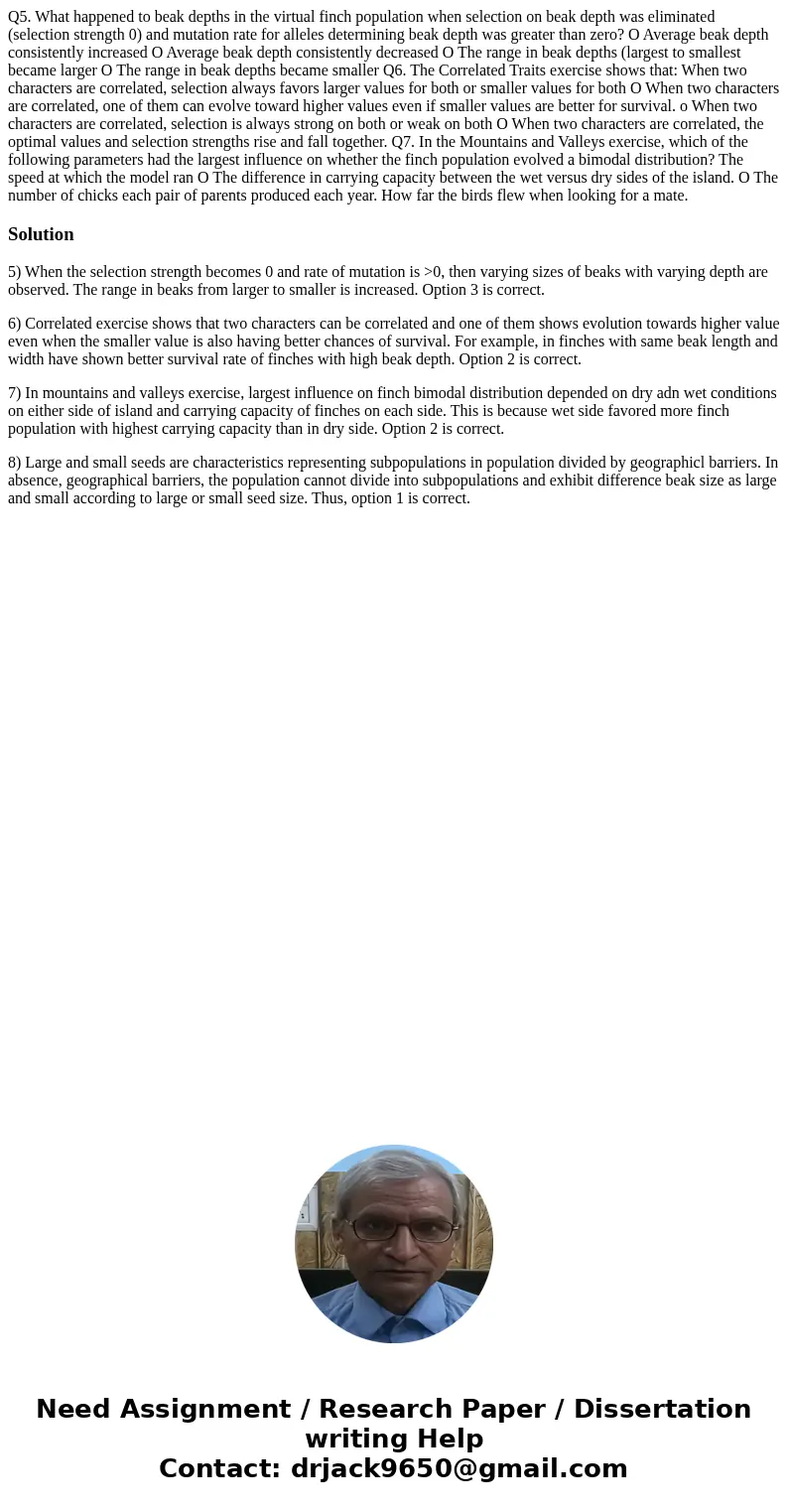Q5 What happened to beak depths in the virtual finch populat
Solution
5) When the selection strength becomes 0 and rate of mutation is >0, then varying sizes of beaks with varying depth are observed. The range in beaks from larger to smaller is increased. Option 3 is correct.
6) Correlated exercise shows that two characters can be correlated and one of them shows evolution towards higher value even when the smaller value is also having better chances of survival. For example, in finches with same beak length and width have shown better survival rate of finches with high beak depth. Option 2 is correct.
7) In mountains and valleys exercise, largest influence on finch bimodal distribution depended on dry adn wet conditions on either side of island and carrying capacity of finches on each side. This is because wet side favored more finch population with highest carrying capacity than in dry side. Option 2 is correct.
8) Large and small seeds are characteristics representing subpopulations in population divided by geographicl barriers. In absence, geographical barriers, the population cannot divide into subpopulations and exhibit difference beak size as large and small according to large or small seed size. Thus, option 1 is correct.

 Homework Sourse
Homework Sourse